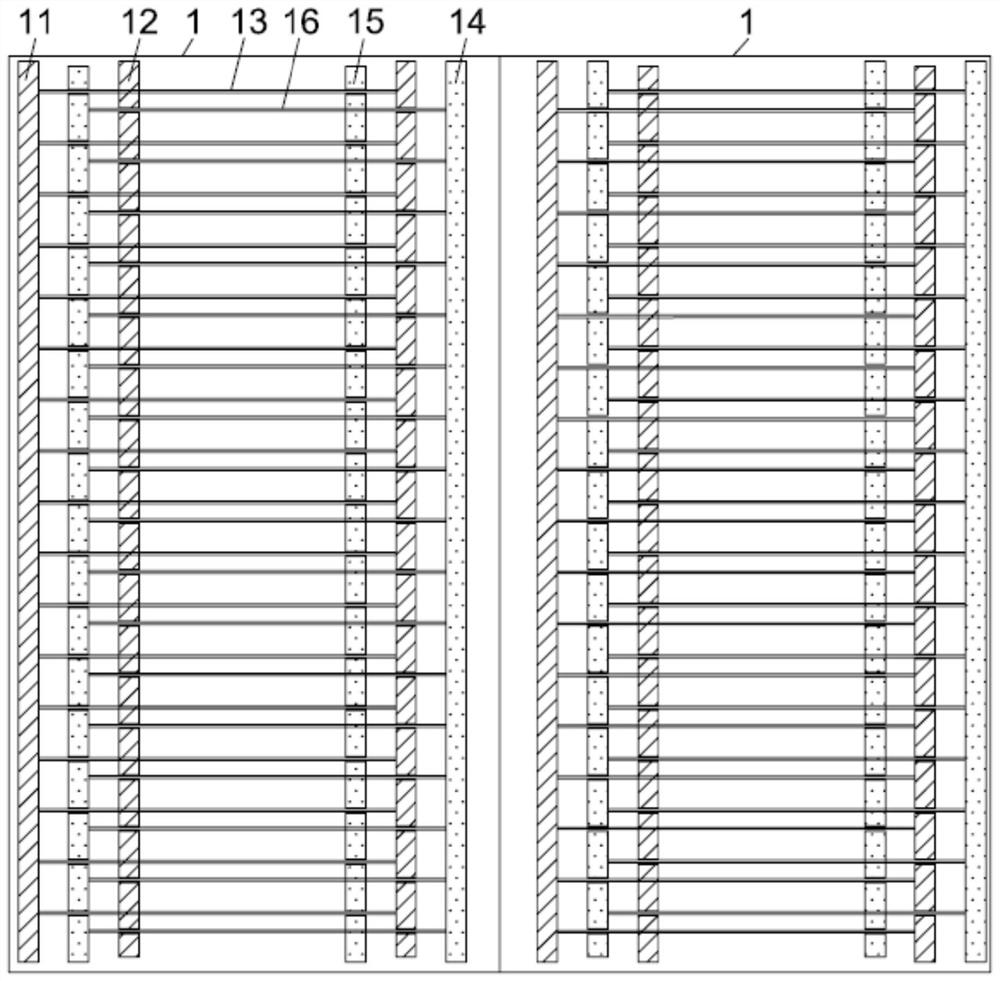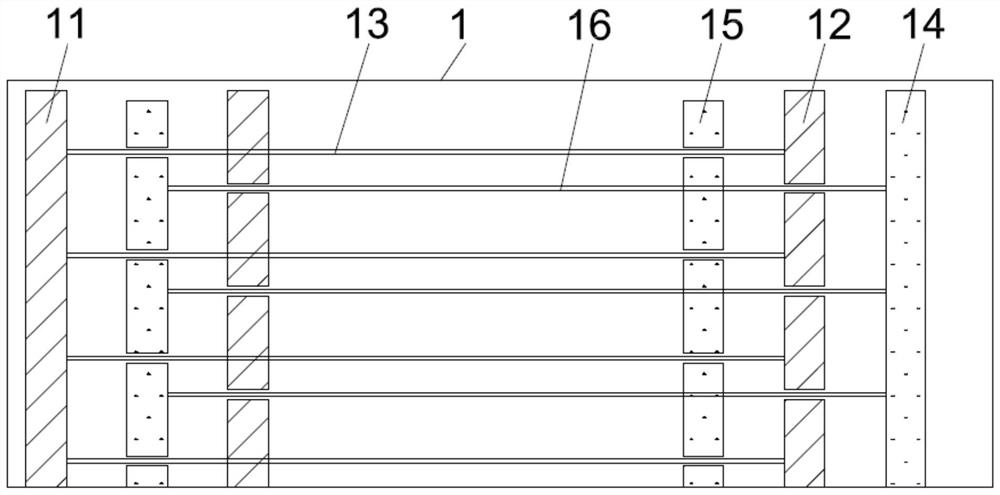Back contact solar cell, assembly and system
A solar cell and back contact technology, which is applied in the field of solar cells, can solve the problems of increasing production costs, heavy workload of sub-cells in series, and affecting the production efficiency of full back contact solar cells, so as to simplify the interconnection process and save electrode paste , the effect of improving the preparation efficiency
- Summary
- Abstract
- Description
- Claims
- Application Information
AI Technical Summary
Problems solved by technology
Method used
Image
Examples
Embodiment 1
[0027] In the back contact solar cell of this embodiment, p+ emitter regions and n+ base regions are alternately arranged on the back surface. Wherein, the back contact solar cell includes at least two sub-cells 1 arranged in sequence, and the back surface of each sub-cell 1 is provided with a back electrode; the back electrode includes alternately arranged emitter electrodes and base electrodes, and the emitter electrodes are arranged on the p+ emitter. The back surface of the pole region, so that the emitter electrode can be connected to the p+ emitter region to realize current transmission, and the base electrode is arranged on the back surface of the n+ base region, so that the base electrode can be connected to the n+ base region to realize current transmission, The above configurations of the emitter electrode, p+ emitter region, base electrode and n+ base region are all conventional configurations of back-contact solar cells, and will not be repeated here. Preferably, b...
PUM
| Property | Measurement | Unit |
|---|---|---|
| electrical resistivity | aaaaa | aaaaa |
Abstract
Description
Claims
Application Information
 Login to View More
Login to View More - R&D
- Intellectual Property
- Life Sciences
- Materials
- Tech Scout
- Unparalleled Data Quality
- Higher Quality Content
- 60% Fewer Hallucinations
Browse by: Latest US Patents, China's latest patents, Technical Efficacy Thesaurus, Application Domain, Technology Topic, Popular Technical Reports.
© 2025 PatSnap. All rights reserved.Legal|Privacy policy|Modern Slavery Act Transparency Statement|Sitemap|About US| Contact US: help@patsnap.com


